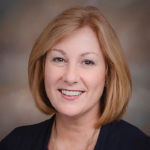Advocacy can be as simple as wearing something that can spark interest in a topic, she said, such as the lapel pin of a fork with bent tines that represents the ACR’s Simple Tasks campaign. It sends the message that even simple tasks can become impossible because of rheumatic diseases.
“This is probably the number-one conversation-starter I have with my students, with my colleagues, with patients, with my congressional delegation, my state officials,” she said. “People want to know why you’re wearing a fork. It is an open door. And that’s what we want to see, so we can have our voice heard.”
Making Advocacy Effective
The idea of advocacy might be more fundamental to the job of practicing medicine than you realize, she suggested. The official policies and mission statements of medical organizations frequently mention it. “The graduate is able to represent the patient’s best interest,” reads language used by the Accreditation Council for Pharmacy Education Standards. Language used by the Commission on Collegiate Nursing Education includes, “Baccalaureate generalist nurses are members of the profession and in this role are advocates for the patient and the profession.”
Dr. Nola outlined five rules for making advocacy encounters effective:
- Advocacy just means speaking up.
- Learn to think in terms of 51%—in other words, a small amount can make an important difference. “I always like the thought process of, ‘If I don’t say anything, I’m at zero and the status quo will remain. But if I say something, there’s potential.’ That’s what speaking up is all about,” she said.
- Always keep in mind patients as well as three other audiences: elected officials and their staff, other voters and the media. “We’ve got to think about, who else can we bring along with us in those discussions?” she said, adding, “What’s your passion? Is it JIA? Is it scleroderma? … Be that person with the media.”
- Be sure your audiences hear you.
- Always keep the door open for next time.
Teaching patients to be their own advocate will also help with their care. “How do we help our patients become their own best advocates?” she said. “We talk about shared decision making. How are they going to do shared decision making if they can’t be a self-advocate?”
Many members of the audience were probably practicing advocacy at ACR Convergence 2022 without even realizing it, she noted.
“When you present a poster, when you present an abstract, when you’re up here on stage, you are being an advocate,” she said. “One of the key takeaways from today is, it’s not always about going to Congress. There are other ways you can do this,” she said. “We’re not going to be here forever. We have to do that pay-it-forward piece.”

